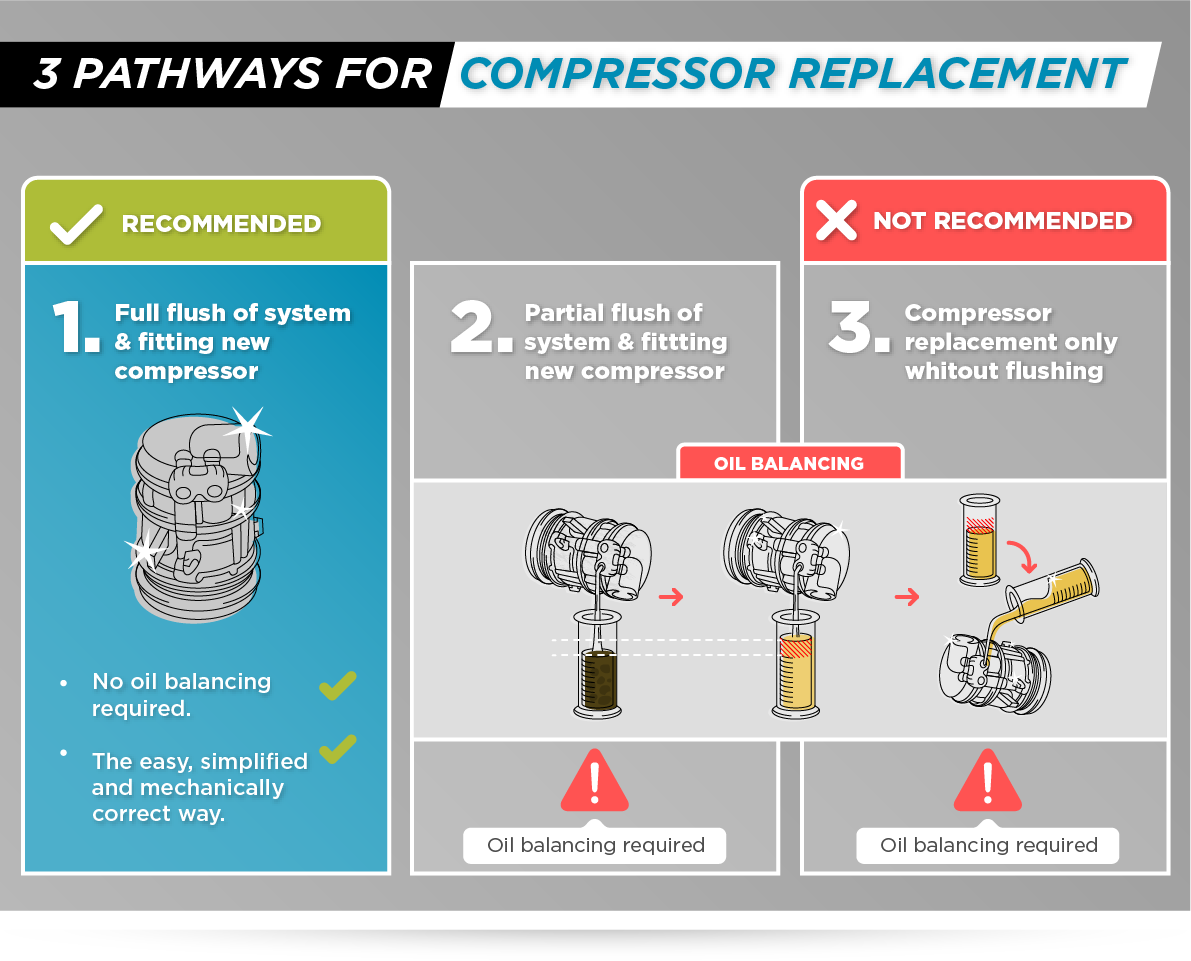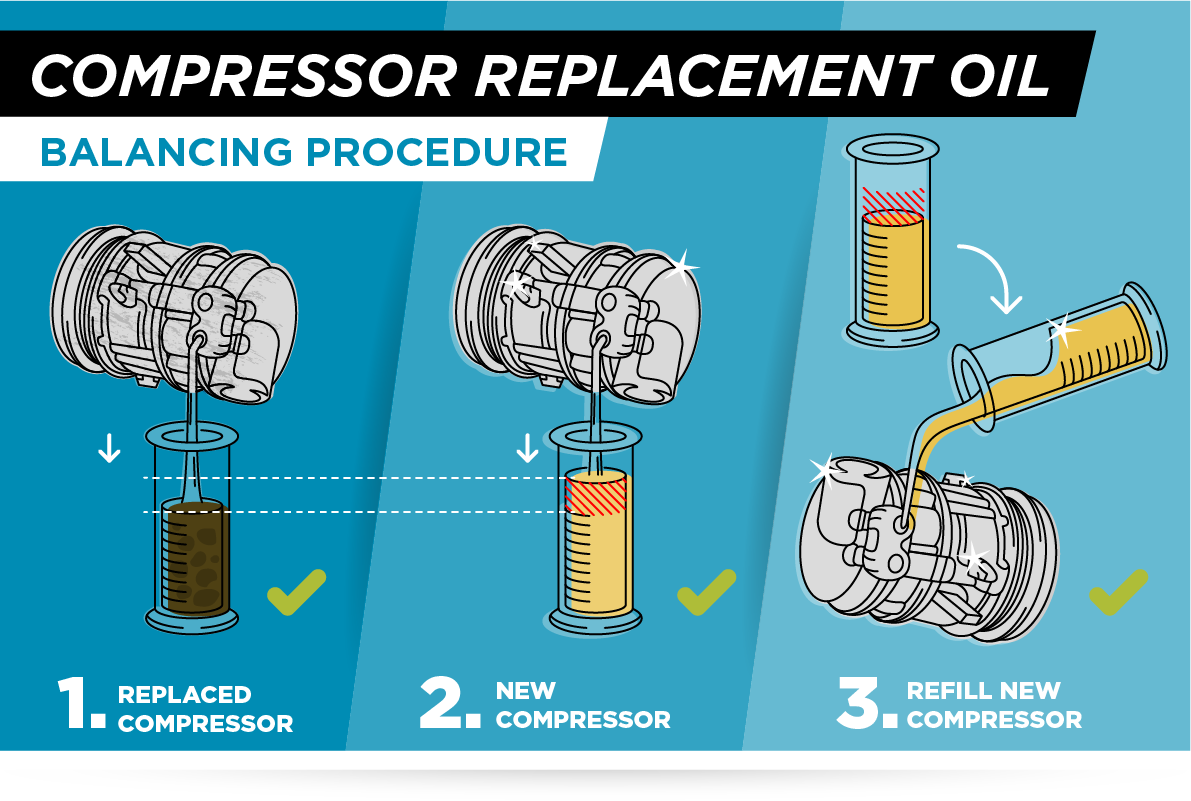
Compressor Replacement Pathway 1:
- Remove the old compressor and flush the entire system and remaining components. If you choose this pathway when replacing compressors, you’re on the recommended route. It’s the route that is mechanically most sound for various reasons and also the simple route because you can omit the step of oil balancing. Remember you must always replace the drier and a TX Valve replacement is always recommended. Modine and tube and fin evaporator coils can be successfully flushed, but plate and fin and parallel flow condensers cannot be successfully flushed if there are filings or metal particles found in the system.
Compressor Replacement Pathway 2:
- Remove the old compressor and partially flush the system and other components. There are various reasons of why you might choose to use this option, however, beware that this option requires you to balance the system oil charge when fitting the new compressor. You will also be mixing old and new oil in this scenario which has the potential to cause issues down the track. Again, if taking this route, always replace the drier as moisture in the system is the ‘enemy’ of refrigeration and the mix of moisture/oil/refrigerant causes an acid to form.
Compressor Replacement Pathway 3:
- Removal and replacement of the old compressor only. Staying within the road analogy, if you choose this route, it may seems like you’re on the fastest route but you haven’t realised the bumps and potholes you’re about to encounter. In other words, it’s not the recommended route. Oil balancing is a necessity in this scenario. Again, always replace the drier.

Question - Does the new A/C compressor come with oil?
- Answer: Usually, yes. Occasionally oil is removed for shipping via air freight. Remember, it is always the responsibility of the A/C technician/fitter to check the compressor is charged with oil. If no oil is present, refer to the Pag Oil Application Guide (page 995 of our latest full catalogue edition 13), or manufacturer’s specifications.
Question - Is the oil in the new compressor enough for the whole A/C system?
- Answer: Yes, new compressors containing oil come with a full system charge. When operating, 50-60% of the system oil charge remains in the compressor (for some compressors, like Delco or York, it’s more like 70-80%). So, if simply replacing a compressor without balancing the system oil charge, the result is an over-oiled system. Over-oiled systems cause the same problems as liquid-slugging. Excess oil (liquid) returns to the compressor on the suction side, and since it’s incompressible, can cause damage to the internal components of the compressor.



